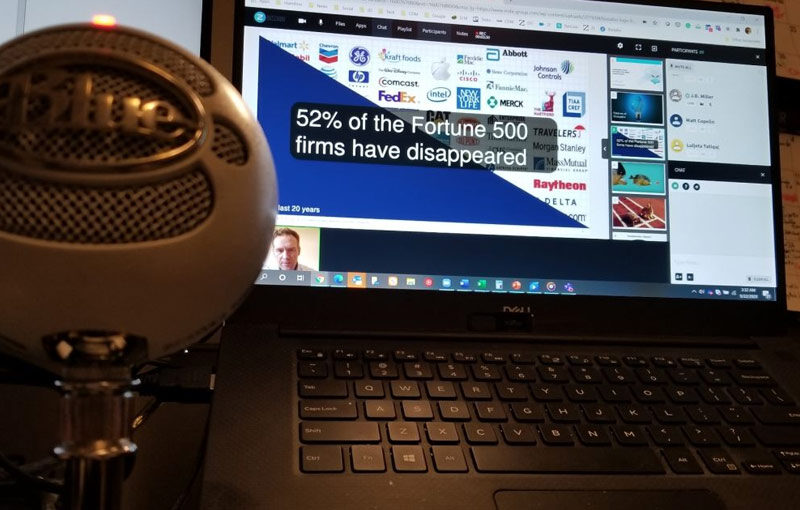CDM Media’s J.D. Miller sat down with Dirk Ramhorst, for a discussion on the changing phases of IT transformation.
Dirk serves as the CIO and Chief Digital Officer at Wacker Chemie. Based in Munich, he’s been with Wacker for almost five years and previously served as Chief Digital Officer for BASF.
“It’s no longer time and budget; it’s about the usage of what we have deployed,” Dirk says about digital transformation.
What do you think is the most positive impact organizations have seen or expect to see from digital transformation today? In the two phases, pre-COVID and the COVID phase, we’ve covered a lot of things that seemed impossible, but are now possible, somehow. I’m not saying that home office and working remotely is digital transformation, but it’s a major building block on our roadmap along the so-called backend digital program.
This was an outstanding milestone of something that was believed impossible before. Nevertheless, as part of the digital story, it’s very important to bring value to everybody independently from role, education, organizational belonging, and to make sure that everybody understands what’s in for him or her regarding digital transformation.
Talk to us a little bit about the top drivers and concerns for digital transformation. The top driver for us is the understanding of data. So the process industries that I represent is very data-rich. We produce millions of data sets a second, but most of the data are not looking into the future, they only look back at what was done.. Nevertheless, the understanding of the value of the data we have on hand, the understanding of the data that potentially we need on top is something that lights us very much into the future.
Tell me, with accelerated digital transformation in 2020, do you feel that created any gaps for organizations?Not really, I think here, we see a lot of movement in the right direction. The challenge of being remote is that in a normal production unit like Wacker, it’s very difficult not to split the organization for those they can, for example, participate from working from home, and those that still have to go into the facility in order to really produce a physical or chemical product.
When you’re looking at transformation, how do you determine the technology you’ll use to help you not just survive, but thrive? Digital transformation is something that goes very much into the values of each and everybody. Therefore, it’s driven by technology, but it’s not led by technology. If you look into groundbreaking technologies like artificial intelligence, they’re out there, but they haven’t been affordable for many companies for quite a while.
The question is, when you come up with a new technology like AI, what does it mean? Is it something that will cut my job? Is it something that will kill me? It’s a lot about demystifying those technologies in order to showcase value. What does it really mean? What does it really bring to the table, especially in the area of security?
When we talk about digital transformation to an IT transformation, how are teams able to maintain and improve productivity today in this unique working environment? Part of IT transformation is that you create a different mindset in IT. When I took over my group, about five years ago, it was purely seen as a cost factor. We transformed IT into a business-enabling function, not only by definition, but also by perception. So the businesses around us, our real entrepreneurs that run the business are now seeing IT in a different role.
I’ll give you one example, which has become a key performance indicator for defining success in my group: It’s the usability and the usage of something we went live with. It’s no longer time and budget; it’s about the usage of what we have deployed. It’s like you have a book on the bookshelf, which you don’t read, which is creating no value, versus books that you have in front of you and really changing day-to-day operation.
IT has gone to the forefront of many organizations as it touches all departments, marketing, sales, and operations. IT has a seat at the table for a lot of organizations now as the leader, how do you keep that seat and be that influencer within a corporation? I think, as I mentioned earlier, this is really something we have achieved in the last five years. In my role as a CIO, it’s about being at the table in all the discussions, and to challenge us to really stay omnipresent. Also with my leadership team, bringing in all the discussions of value to the table.
We also have to manage expectations because they are so high. Of course, topics like cybersecurity, data privacy and those things still play an important role that might limit the role to sit at the table because in some cases you simply have to say no, it’s not going to work, because it violates security, safety or data privacy and to balance what is possible to start discussion what we need to do in order to make it happen versus why it’s not working. This is very important.
To hear more of the conversation with Dirk Ramhorst, listen to the full podcast here.



